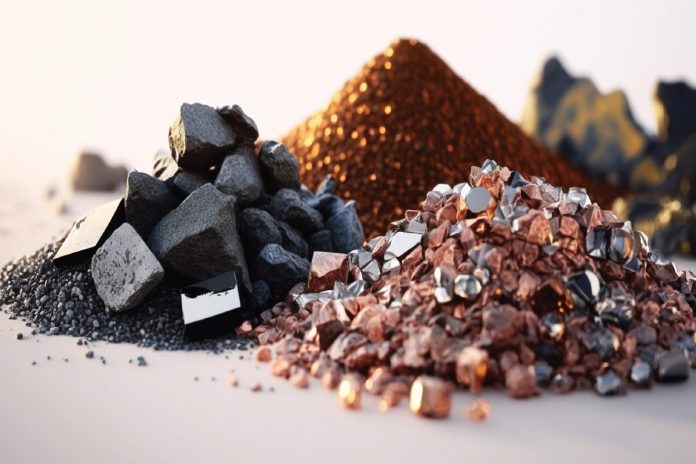The Union Cabinet chaired by Prime Minister Narendra Modi on Wednesday approved amendment to a key mineral law to prescribe rate of royalty in respect of three critical and strategic minerals, namely, Lithium, Niobium and Rare Earth Elements (REEs).
Swarajya explains the importance of the key amendment and its implications for India’s lithium mining.
Royalty Rate
Mineral royalty is the economic rent due to the sovereign owner (government) for the right to extract mineral substances.
The mineral royalty rates are specified in the Second Schedule of the Mines and Minerals (Development and Regulation) Act, 1957 (MMDR Act).
As per Section 9 of the MMDR Act, every mining lease holder needs to pay royalty for major minerals removed or consumed as per the royalty rates specified in the Second Schedule.
Further, the royalty rates of minerals are revised from time to time, with the Act stipulating that the Central Government shall not enhance the rate of royalty in respect of any mineral more than once during any period of three years.
Prevailing Royalty Rates
In India, the royalty is levied on minerals in three ways — per-tonnage basis, ad valorem basis, and on the basis of percentage of London Metal Exchange (LME) price chargeable on the contained metal in ore.
Royalty of only 6 major minerals, namely Asbestos, Graphite, Limestone, Limeshell, Marl and Tungsten are payable on per-ton basis.
For all other minerals the royalty is fixed on ad valorem basis or on the basis of percentage of LME price chargeable on the contained metal in ore.
Further, item No. 55 of the Second Schedule of the act specifies a royalty of 12 per cent of average sale price (ASP) on ad valorem basis for minerals that are not specifically listed in that Schedule.
This means, until now, mining of lithium, niobium and REE would have attracted a royalty of 12 per cent, among the highest in the world, thus, impacting the competitiveness of the sector.
Amendment and Significance
The amendment to the Second Schedule of the MMDR Act as approved by the Cabinet provides new royalty rates for these minerals.
Now, lithium mining will attract a royalty of 3 per cent based on the LME price, Niobium will be subject to 3 per cent royalty calculated on the ASP, in case of both primary and secondary sources.
Similarly, REEs will have a royalty of 1 per cent based on the ASP of the Rare Earth Oxide (the ore in which the REE is most commonly found).
The specification of new royalty rates effectively aligns India’s royalty rates with global benchmarks, and paves the way for attracting more private players into commercial exploitation of these minerals.
For example, Argentina which along with Chile and Bolivia form the “Lithium Triangle”, stipulates three per cent royalty for lithium miners.
Encouraging indigenous mining would lead to reduction in imports and setting up of related industries and infrastructure projects. The proposal is also expected to increase generation of employment in the mining sector.
Reforms Push
In a major achievement, the Ministry of Mines in February 2023 had announced that the Geological Survey of India (GSI) had established “lithium inferred resources” — calculated on the basis of physical and chemical study of the surface and samples — in Salal-Hamima area of Reasi District of Jammu and Kashmir.
The resources to the tune of 5.9 million tonnes (MT) have been established as part of the “Reasi Sersandu-Kherikot-Rahotkot-Darabi” mineral block, where prospecting has been ongoing since 2021-22. Further exploration activities for searching additional lithium sources is already underway in the Salal Hamima region in Jammu.
Subsequently, in June 2023, the Centre included Lithium, Niobium and REEs in a list of “thirty critical minerals” that it considers essential for economic development and national security of the country.
Apart from their usage and geo-political significance, these minerals have also gained significance in view of India’s commitment towards energy transition and achieving net-zero emission by 2070.
As such, the Centre has enacted a slew of reforms to tap vast reserves and attract private investment into this critical sector.
In this regard, the MMDR Act was amended in August 2023, which among other things, delisted six minerals, including Lithium and Niobium, from the list of atomic minerals, thereby allowing grant of concessions for these minerals to private sector through auction.
Further, the amendment provided that mining lease and composite license of 24 critical and strategic minerals, including Lithium, Niobium and REEs (not containing Uranium and Thorium), shall be auctioned by the Central Government.
The Central Government is working to launch the first tranche of the auction of critical and strategic minerals such as Lithium, REE, Nickel, among others shortly.


